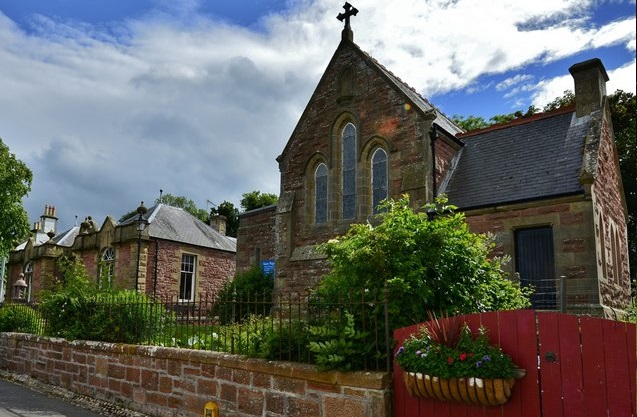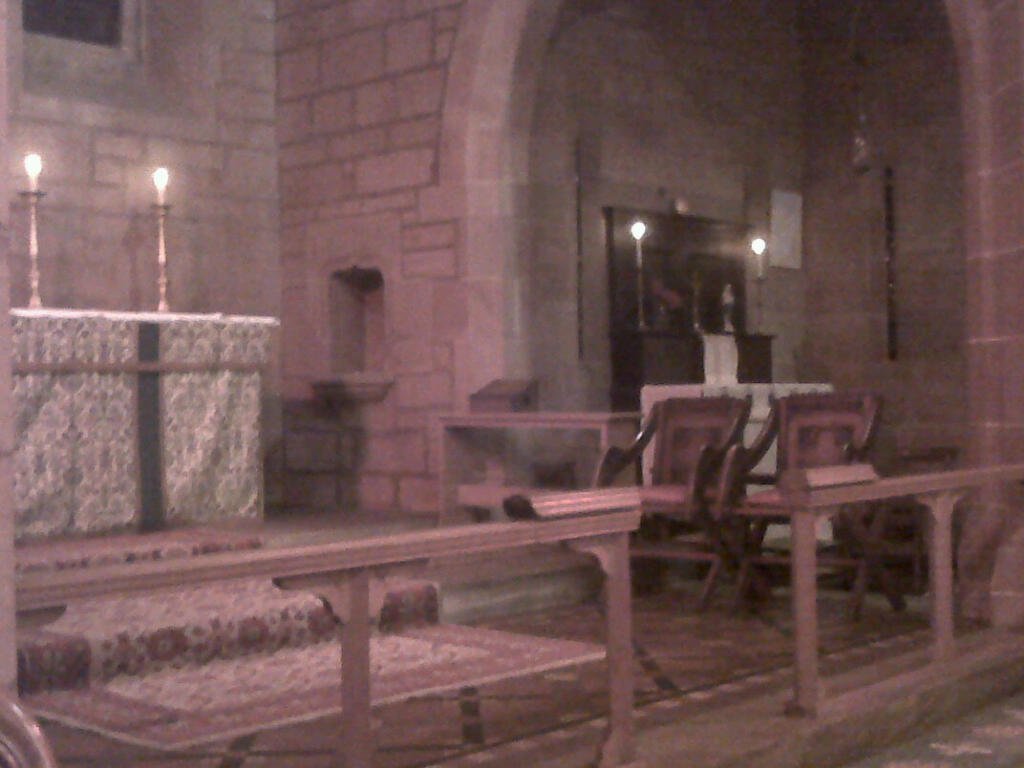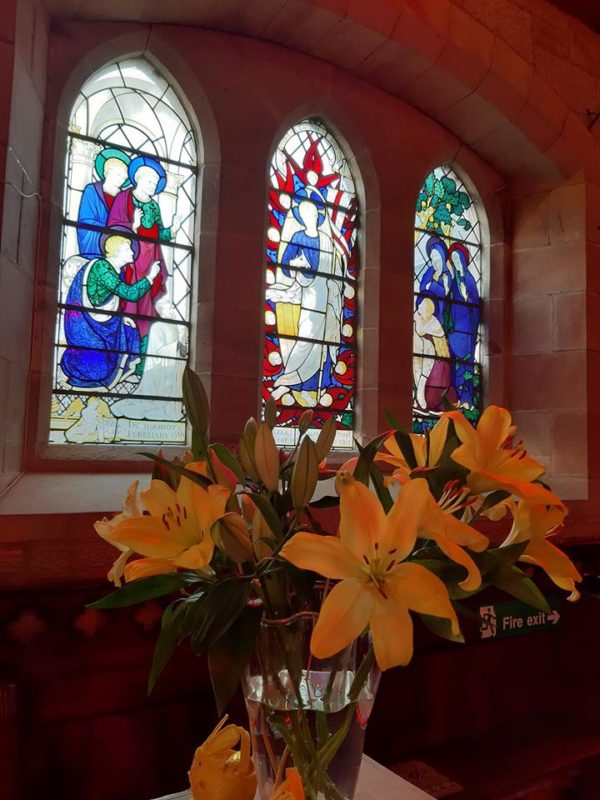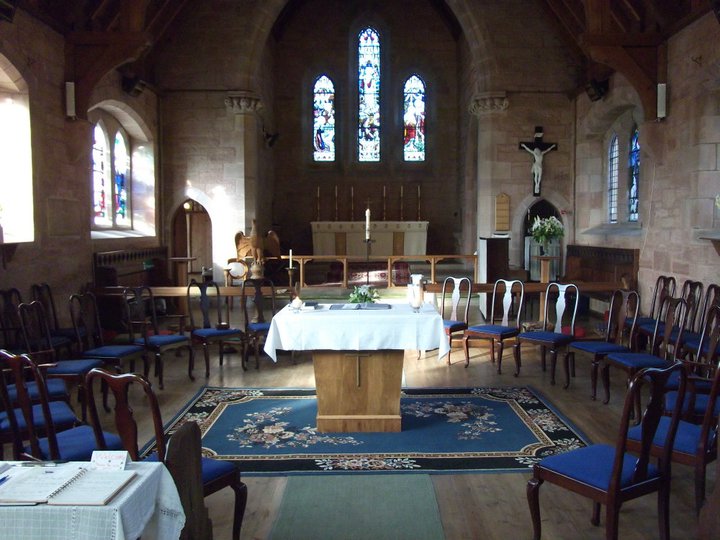Saint Regulus’ Church, Cromarty
Cromarty
Saint Regulus’ Church began as a Mission from Fortrose in 1877 under the dedication of ‘All Saints’, with the people meeting for worship in the County Buildings.
The foundation stone of the church was laid in 1904 and the building completed in 1906. The new Gothic church was dedicated ‘All Saints’. Some time later the dedication was changed to ‘St Regulus and All Saints’, then to ‘St Regulus’ alone, as a condition for receiving a generous legacy!
While the congregation now gathers around a nave altar for Sunday and most weekday celebrations, there is a beautiful stone altar against the east wall of the sanctuary which is always adorned with a cross and six candlesticks. The beautiful window above the east altar has the Resurrection in the centre with the Nativity on the left and our Lord’s Baptism on the right.
There are two fine memorial windows by Sir Ninian Comper: on the north wall of the Risen Lord with his followers (in memory of the Rev Albert Chadwick – depicted kneeling in one of the windows – Priest-in-Charge before St Regulus’ was joined with Fortrose); the other is of St Francis of Assisi with locally-found animals – a fox, a lamb, a rabbit and a cairn terrier at his feet.
Comper’s famous ‘signature’, a strawberry, can be seen in the corner of each of these windows. The Lady Chapel (through the door to the right of the high altar) is in what would have been the base of the tower, had finances been available to build it. It is adorned with four narrow windows depicting the four seasons. A tabernacle on the centre of the chapel’s altar houses our Lord’s Presence in the Blessed Sacrament.
A Little about our Patron Saint
The details of Saint Regulus’ life are unclear and differ in the several extant accounts. Saint Regulus was a monk or bishop of the city of Patras, in present-day Greece, then part of the Roman Empire. In AD 345 Regulus was told by an angel in a visionary dream that the Emperor Constantine had decided to remove Saint Andrew’s relics from Patras to Constantinople, and in some retellings that Constantine was about to invade Patras. For safekeeping Regulus was to move as many bones as far away as he could to the western ends of the earth, where he should found a church dedicated to St Andrew. He was accompanied on his voyage by a number of consecrated virgins, among these Saint Triduana.
According to the various accounts Regulus was either shipwrecked or told by an angel to stop intentionally on the shores of Fife at the spot called Kilrymont, a Pictish settlement which is now St. Andrews. Here he was welcomed by a Pictish king, Óengus I (who was actually of the eighth century). Regulus is claimed to have brought three fingers of the saint’s right hand, the upper bone of an arm, one kneecap, and one of his teeth.





